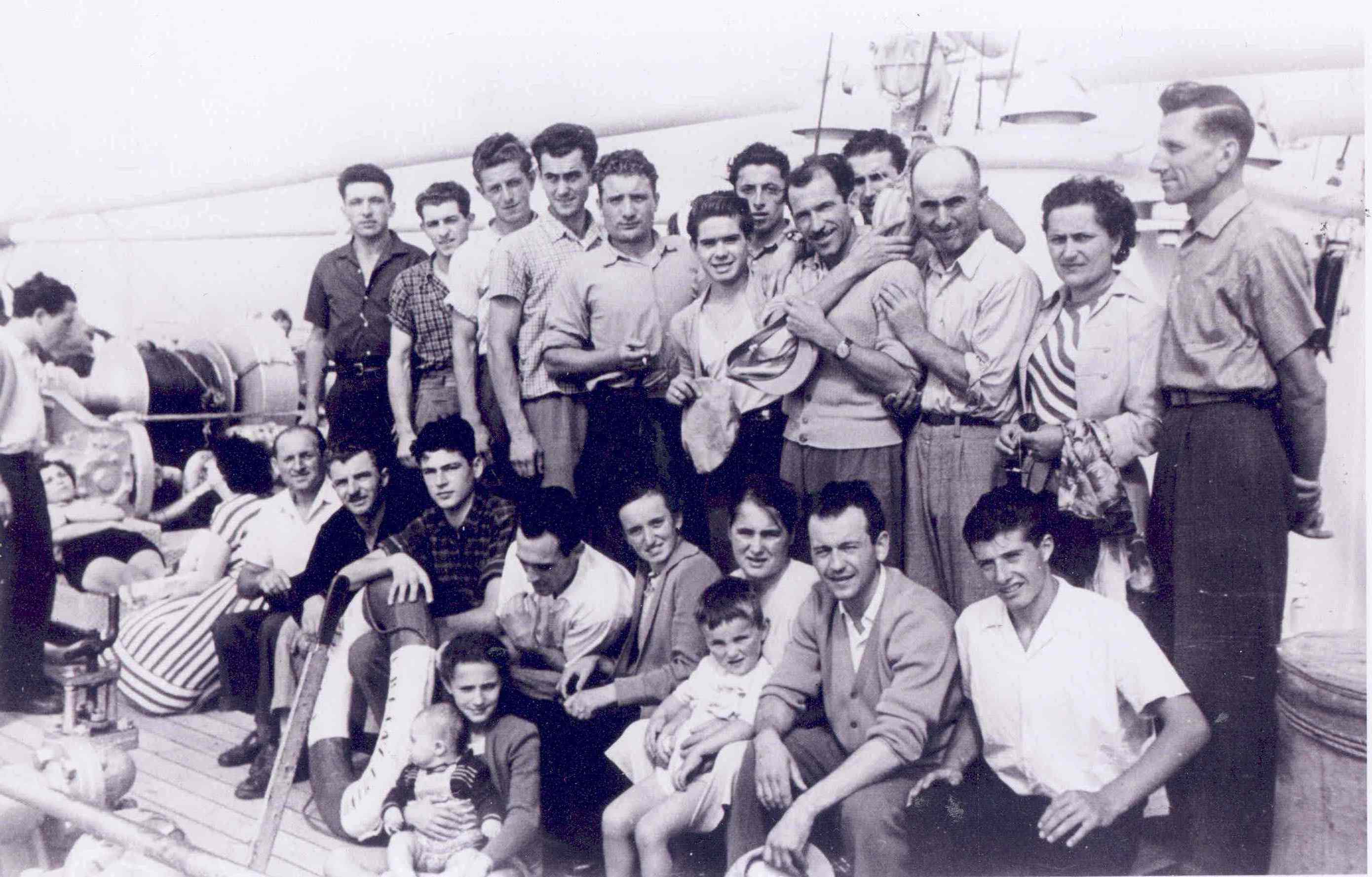Friday, November 6, 2009
Wednesday, November 4, 2009
Sources
http://www.sbschools.org/schools/bc/mediacenter/immigration/images/immigrant.gif
picture of polish immigrants
http://www.encyclopedia.chicagohistory.org/pages/982.html
information on polish immigration in chicago
http://nhs.needham.k12.ma.us/cur/kane98/kane_p3_immig/italian/italian.htm
pictures and information on italian immigration
http://www.mhso.ca/familystories/content/Italian_immigrants_1959.jpg
picture of italian immigrants
picture of polish immigrants
http://www.encyclopedia.chicagohistory.org/pages/982.html
information on polish immigration in chicago
http://nhs.needham.k12.ma.us/cur/kane98/kane_p3_immig/italian/italian.htm
pictures and information on italian immigration
http://www.mhso.ca/familystories/content/Italian_immigrants_1959.jpg
picture of italian immigrants
Tuesday, November 3, 2009
Polish Immigration

Many Polish immigrants came to America for economic, political and religious reasons. The majority came from the South and Southeastern parts of Poland, which at the time, were very poor and overpopulated areas. Many immigrants were illiterate and unskilled laborers, even in their own country.The massive immigration started when a group of farmers left the country in the hopes of finding better economic opportunity. Many of them had lost their land and weren't able to feed their families, which was a direct conflict of the Polish belief that if you owned land it showed stability, but without it you were in ruin. This belief, combined with political and religious conditions in Poland, was one of the reasons for the large Polish immigration to the United States.A large number of Polish immigrants came to the United States solely to make money. These people were called "za chlebem" or "for bread" immigrants. It was thought that once they made some money, they would return to Poland and be prosperous. Still other Polish immigrants sold everything to travel to America and start a new life, and once in America, encourage their relatives to make the same trip.Most Polish immigrants were Roman Catholics and they tended to stick together, forming large groups with other Polish immigrants. They continued with their Roman Catholic religion, and set up huge churches that became the centers of their communities.In Polish immigrant families, everyone in the household worked, including mothers and children. Men without skills worked in industrial facilities, did menial tasks and dirty jobs, while the women ran the households, took in borders and did laundry for others. But most Polish immigrants did not seem to mind, since they had been unemployed for years in their homeland.
Italian Immigration

During the mass emigration from Italy between 1876 and 1976, the United States was the largest single recipient of Italian immigrants in the world, with over four and a half Italian immigrants arriving in America.More Italians have immigrated to the United States than any other group of Europeans. Most of the Italian immigrants came from southern Italy, leaving to escape the economic hardship, natural disasters, high taxes and scarcity of resources in their homeland.
Once they passed through Ellis Island, many Italian immigrants settled right in New York City, bringing with them their culture and beliefs. The new American-Italians clustered into groups that corresponded to their place of origin. For example, people from different parts of Sicily settled on different streets, and the Neapolitans settled on even different streets or neighborhoods. But no matter where they settled, living conditions tended to be crowded and dirty. They were likely to take construction jobs and were contracted out by professional labor brokers known as padrones. Italian immigrants dug tunnels, built bridges and roads, laid railroad tracks and helped build the first skyscrapers. By 1890, nearly 90% or New York City's public works employees were Italian immigrants.
Many Italian immigrants never intended to make America their permanent home - they migrated to the United States to find work, and either sent money home or tried to save enough money to have a better life in their homeland. Some traveled to America in early spring and worked until late fall, returning then to the warmth of their southern European homes for the winter. It's estimated that 20 to 30 percent of Italian immigrants returned to Italy permanently.
Once they passed through Ellis Island, many Italian immigrants settled right in New York City, bringing with them their culture and beliefs. The new American-Italians clustered into groups that corresponded to their place of origin. For example, people from different parts of Sicily settled on different streets, and the Neapolitans settled on even different streets or neighborhoods. But no matter where they settled, living conditions tended to be crowded and dirty. They were likely to take construction jobs and were contracted out by professional labor brokers known as padrones. Italian immigrants dug tunnels, built bridges and roads, laid railroad tracks and helped build the first skyscrapers. By 1890, nearly 90% or New York City's public works employees were Italian immigrants.
Many Italian immigrants never intended to make America their permanent home - they migrated to the United States to find work, and either sent money home or tried to save enough money to have a better life in their homeland. Some traveled to America in early spring and worked until late fall, returning then to the warmth of their southern European homes for the winter. It's estimated that 20 to 30 percent of Italian immigrants returned to Italy permanently.
Subscribe to:
Posts (Atom)